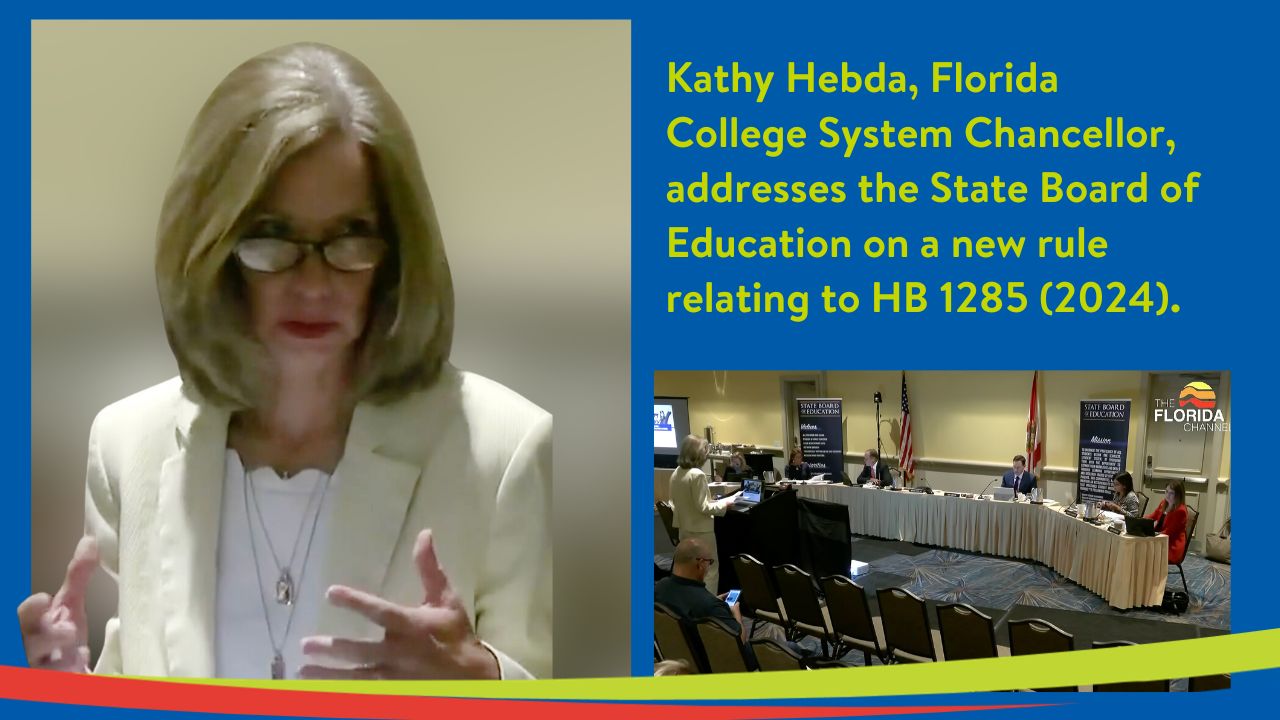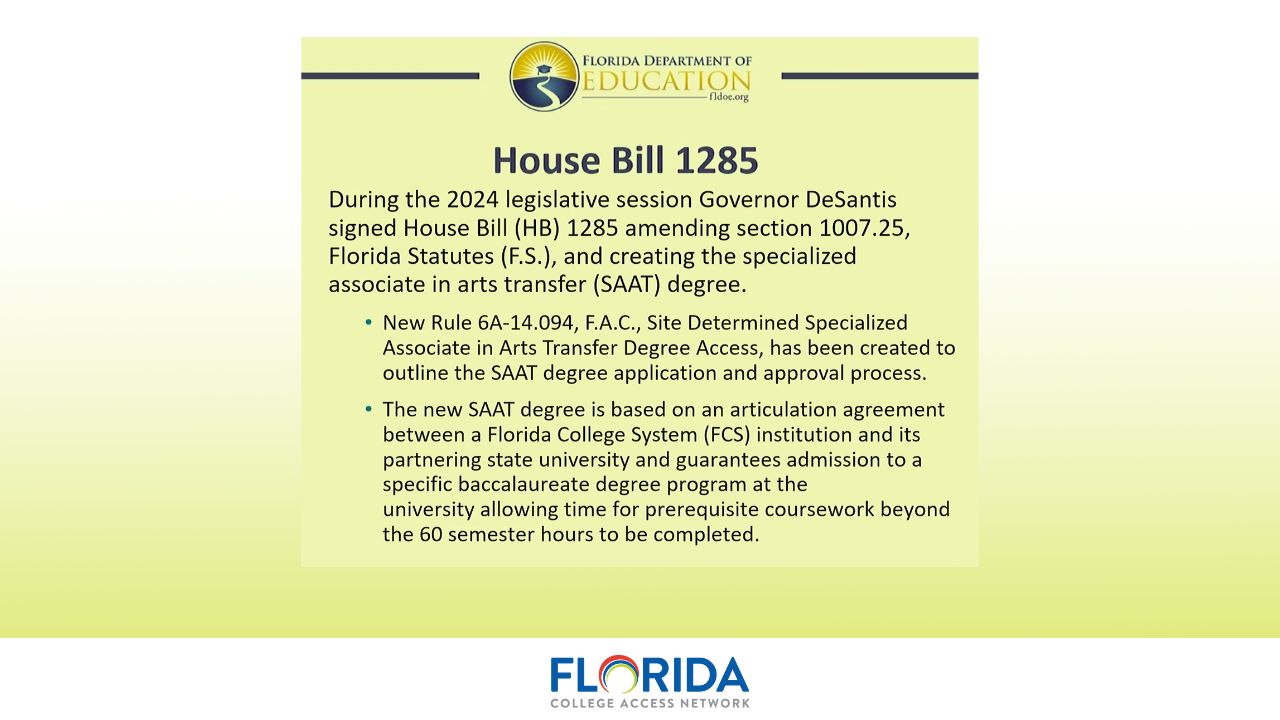
Last week during the State Board of Education’s July meeting, the Board approved a new rule creating the new specialized AA transfer degree (SAAT) for Florida College System (FCS) students. The action comes from House Bill 1285, passed earlier this year during the 2024 legislative session and signed by Governor DeSantis on April 16th. This new transfer degree is created for specific AA programs that may require additional coursework beyond the traditional 60 credits, such as certain STEM majors, prior to transferring to a baccalaureate program at a State University System (SUS) institution.
FCS institutions that would like to provide the SAAT for their students must first begin the process by submitting a notice of intent to the Division of Florida Colleges. After a comment period on the notice of intent, the college must submit an application with a detailed summary of the educational program, the rationale for requiring a SAAT as opposed to a general AA degree, the coursework needed beyond the standard 60 credits, and the workforce demand of the subsequent baccalaureate program. Lastly, the colleges will be responsible for collecting and annually reporting data on student performance to the Division of Florida Colleges for accountability purposes. This degree would have the same general education requirements as the other associate and baccalaureate degree programs in Florida.
During the presentation of the new rule, Chancellor Hebda described the following benefits of the new degree pathway, stating it “expands access and streamlines transfer by allowing FCS students to be prepared to begin their desired major when they seamlessly transfer to the partnering state university.” Chancellor Hebda also mentioned that this additional AA degree can provide students with more “affordable, high-quality pathways” to facilitate their postsecondary journey. This new degree program provides students with flexibility, giving them the information they need to successfully transfer into the state university system and eliminating potential barriers for timely transfer.
More information on the new rule can be found here.

